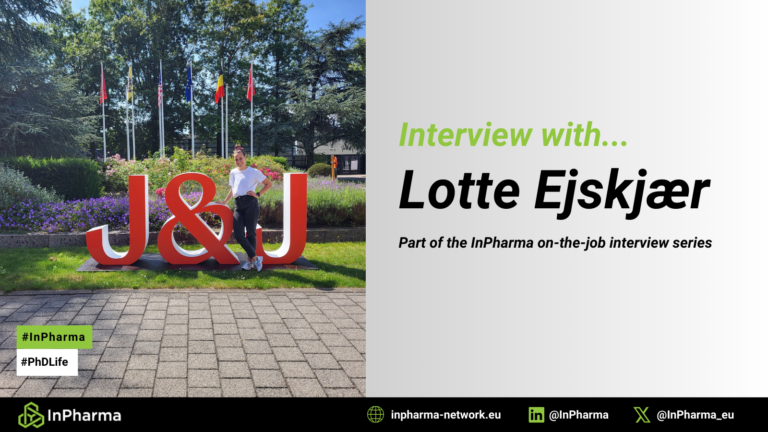Lotte Ejskjær
ESR 4: Computational pharmaceutics tools for guiding lipid-based formulations design
University College Cork, School of Pharmacy (UCC), Ireland
Supervisor: Prof. Brendan Griffin
Planned secondments: Janssen, Pion
Project Description
- Develop computational tools to support a rational and science-based approach to selecting microemulsion formulations for new drug candidates.
- Use multivariate analysis and machine learning techniques to predict extent of supersaturation in microemulsion using large drug datasets.
- Molecular dynamics will be used to provide insights into microemulsion droplet structure and solubilisation capacity for drugs.
Background
I am an educated pharmacist from the University of Southern Denmark. In 2018 I accomplished my bachelor’s degree in pharmacy, and in 2020 I accomplished my Master of Science degree in pharmacy.
In both my bachelor project and master project, I have worked with a relatively new artificial membrane which on the long run hopefully can help minimizing animal experiments. Therefore, as an introduction to my bachelor project, I started looking at the use of experimental animals in pharma industry, and it surprised me that so many animals were used, especially the number used in early development and screening of new drug candidates and formulations. In my bachelor project, I tested the passive permeation of a model drug across the artificial membrane in two different experimental setups and compared it to literature.
In my master project, I continued working with the artificial membrane. I investigated a poorly water-soluble compound formulated as phospholipid dispersions. Different phospholipid dispersions were prepared with two different phospholipids and different drug-to-phospholipid ratios. Afterwards, the permeabilities were tested across the artificial membrane and the drug uptake in rats were investigated as well. The aim was to investigate if the artificial membrane could be used to rate the formulations equal to a rat study, which was the case.
The project was presented with a poster at the Nordic POP conference in January 2020 where the poster won the audience price for best poster. Afterwards, the research results were published in Journal of Pharmaceutical Sciences. The paper was published in equal corporation with a PhD student.
Since my master project, I have been very interested in the use of experimental animals, and how to minimise the use of animals in pharma industry. This correlate perfect with the overall purpose of the InPharma project, which is to generate a fully integrated, animal-free, end-to-end modelling approach to oral drug product development.
In my InPharma project, I will develop computational tools to support a rational and science-based approach to selecting microemulsion formulations for new drug candidates. Multivariate analysis and machine learning techniques will be used to predict extent of supersaturation in microemulsions using large drug datasets, while molecular dynamics simulations will provide insights into microemulsion droplet structure and solubilisation capacity for drugs.

Interview with Lotte Ejskjær for the InPharma-on-the-job series
Lotte Ejskjær, is currently researching the addition of precipitation inhibitors in lipid-based formulations to increase the supersaturated phase after dispersion and digestion in biorelevant media. As part of her individual

